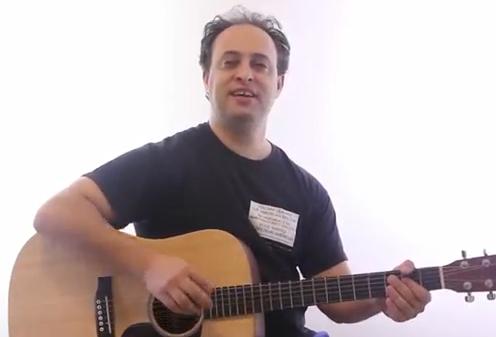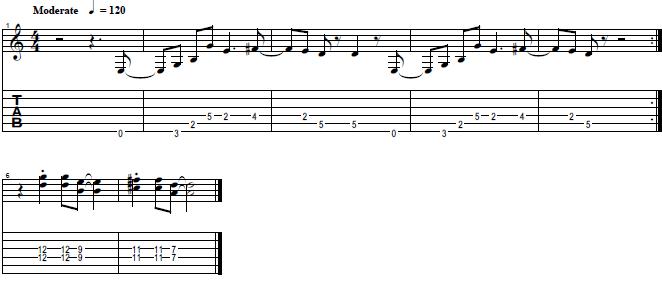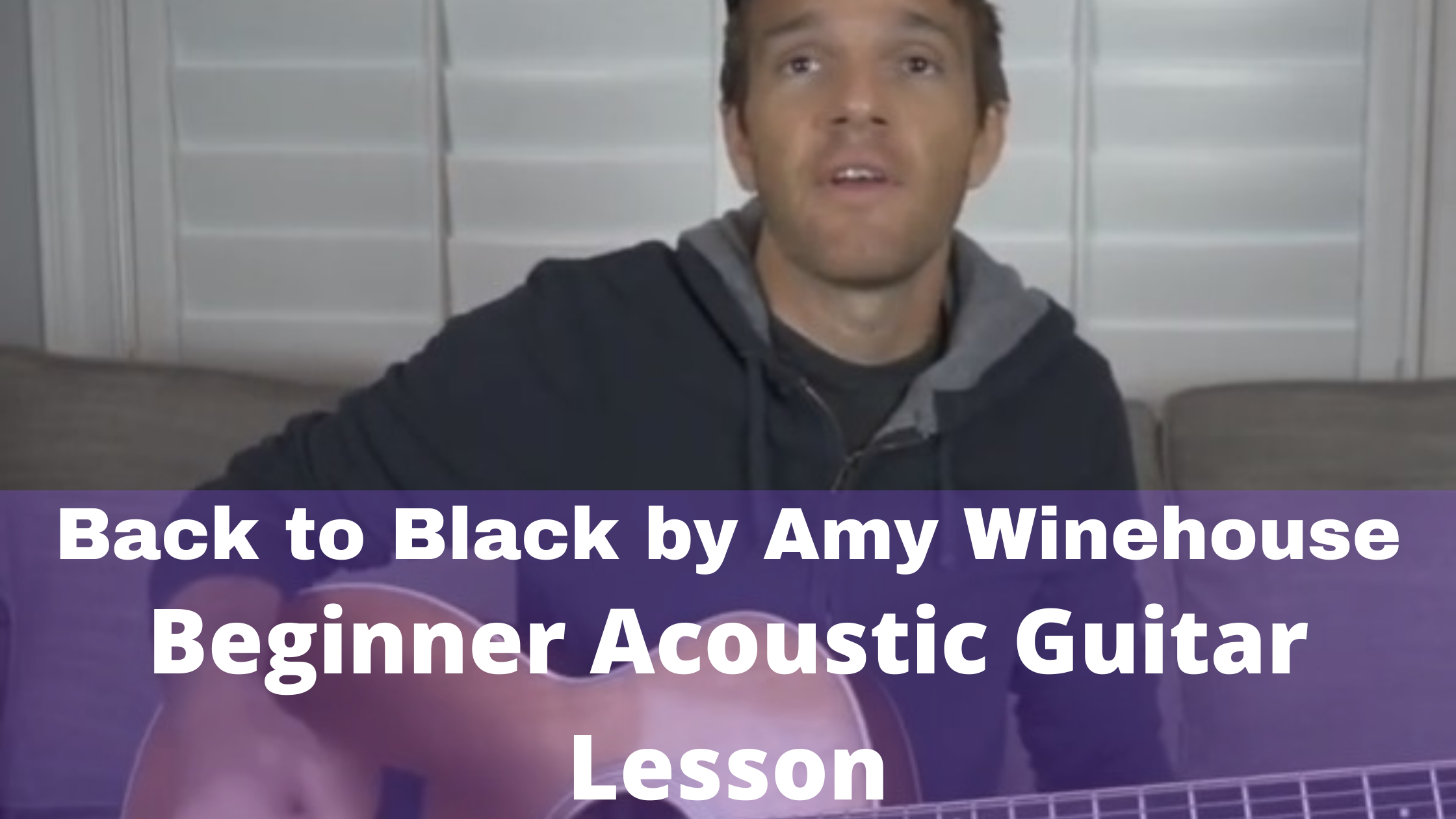Check out this free song lesson from Guitar Control instructor Sean Daniel. In this killer lesson Sean demonstrates how to play Won’t Back Down by Tom Petty. Be sure to get the free tabs that go with this How to Play I Won’t Back Down by Tom Petty lesson.
[contentwall]  [/contentwall][ninja-popup ID=715]
[/contentwall][ninja-popup ID=715]
Introduction
What’s going on everybody? Sean Daniel here with GuitarControl.com and today we are gonna learn the classic rock song, I Won’t Back Down by Tom Petty and the Heartbreakers. This is an excellent song with power chords, palm muting and open chords. So definitely click link below because I’m going to tab all of the stuff with lyrics down there with the chords so you can play along and we’re gonna get right to it. Very simple song, but there’s a lot that you can learn from this and a lot of different variations and ways you can play Won’t Back Down by Tom Petty.
Won’t Back Down
If you just do a solo acoustic guitar performance of Won’t Back Down by Tom Petty they’re only two parts; a verse and of course the first part. So the verse for Won’t Back Down by Tom Petty can be played in two different ways. The first way, which is more kind of like how you hear on the album, I’ll be on an electric guitar and it sounds like this… So these are power chords, just two notes in a chord, we’re gonna start with the seventh fret on the A string with your pointer finger and then with either your ring finger or your pinky finger you can grab the ninth fret on the D string. So I’m playing like that and you can also play it like this with maybe your ring finger on the ninth fret on the D string and your pinky ninth fret on the G string to kind of get a little bit of a louder thing because now you’re playing three notes, but I really like just using two notes to make what’s called a Power Chord and also palm mute. What that means you just take the side your hand and kind of chopped the ridge right here so you kind of give this deadened sound, which is what you’re hearing on the album version with an electric guitar. There’s also an acoustic guitar in the background of the album version of Don’t Back Down by Tom Petty playing these same chords, but in a different way which we’re going to talk about in a second; but first let’s just go over these three power chords that’s really all it is. This is an E power chord which is kind of taking the spot of an E minor chord. It’s just seventh fret on the A string and ninth fret for the D string, again palm muting. E and D; so the seventh fret of the A string and the 5th fret on the A string are going to share a bar. So the way we’re gonna count is; one two three four, one two three four out of this last one. Okay so it’s really it not quite a full time around with both of these because we have one two three four, one two three and then the next third quarter is gonna come in almost like a beat earlier, which to kind of have given that that cool driving rock sound, even though it’s not a super-heavy song.
Alternative Method
So if you’re just starting out you can even do Won’t Back Down by Tom Petty with one note, just the seventh fret to the fifth fret to the third fret on the low E string. Now this now is an E, this note is a D and a third fret on the E string is a G. So these are taking the places of chords like E minor, D major and G which is maybe how you’ve seen it… which is definitely the song, but it doesn’t really sound a lot like the song. The produced version of it anyways, that’s why I like kind of using these power chords… again it’s the same thing the first two times again if you want to count it again it’s; four on the first one three. Eventually that’s gonna be nine counts on this last one this third from the fifth, it’s nine, so I still wouldn’t recommend counting out, I still like keeping it in groups of four like; one two three, one two three four, one two three four, one two three four, one two three four, one two three four, one two three four. I think that’s way better than counting four three and nine but that is the actual amount of hits, so you’re gonna have that on each chord.
So you go through that 2 times; 3, 4, 1, 2, 3, 4, 1, 2, 3, 4, 1, 2, 3, 4, 1, 2, 3, 2, 3, 4, 1, 2, 3, 4, 1, 2, 3, 4 and then the next time you go to a C and then back to the original. See all the same thing really, just; seven, five, three and you can even use the inlays on your guitar that are the odd frets to kind of help me keep track of where that is. A lot of times guys will have it on the side of the neck, you can kind of follow along with right, but we just kind of have four times around the first few times. The third time A minor, D, C and the fourth time A minor, D and G. Now the other note I want to make about this specific part is we’re doing it like this going from the third fret to the E string to the 7th fret of the A string. That can be a long haul, so one way to do it is to leave the G of one beat earlier. What I mean by that is; 1 2 3 4, 1 2 3 4, 1 2 3 4, 1 2 3 4, 1 okay. So you notice how I left earlier and that last beat I just kind of hit an open string set which really isn’t open because you’re still muting it; 1 2 3 4, 1, that doesn’t sound so bad and that’s a much better way to practice your timing than to be like one, two, three, four and then switch, however long it takes you to get from the third fret of the E string to the 7th fret of the A string. If it takes you a long time it doesn’t matter, we’ve all been there when we’re starting out, however long it takes you make that the space between each chord. Okay you can always leave this chord a little bit early as long as you kind of keep the rhythm with your picking hand. Even if you want to do like three beats early; 1 2 3 4, 1 2 3 4, 1 2 3 4, 1 2 3 4, 1, it sounds so much better to practice in time by leaving a chord and still keeping the rhythm in the pulse of the song going than it does to kind of… That broken kind of playing isn’t really the most efficient way to practice and it doesn’t really sound great. The one thing that I did in the intro is I’m gonna kind of transitioning into the E minor again. So for example this is one thing that you can do the whole band do sometimes depending on where you listen to song. This one’s cool because we’re taking those last two counts of; 4, 1, 2, 3, 4 and almost kind of having like a transitional riff back to where we started.
I said these are kind of replacements for open chords on an acoustic guitar this is representative of an E minor, this D major and this is G major. Now a power chord like we said is neither major nor minor, but if you don’t know for sure if it’s major minor use a power chord because it’ll work for either one.
Open Chords
Alright now if you wanted to do Won’t Back Down by Tom Petty with open chords, I mean carry going to the exact same rhythm, you can still palm mute it with E minor, D and G; one two three, one two three four, four one two three four. You can even add that transition if you want to remember the third time, it’s just open chords the same thing. Now that’s the chorus of the song. It’s kind of like the big part of the chorus. No the other thing that’s great about Tom Petty and his band songwriting wise is they really kind of take you on a ride and there’s a big difference between the verse and the chorus of the song. Now when you’re playing acoustic guitar you kind of are doing a representation of the song. It’s very important that you try to capture the dynamics of a band which can be sometimes kind of difficult, that’s why I doing this as power chords…
Before I get to the chorus for Won’t Back Down by Tom Petty remember those last two bars are on a G, whether it’s open or whatever, you can start to build a dynamic up into getting the C or the big powerful C chord by starting to back off on how you’re muting this. So you notice it started it’s very dead and then as I get closer to the C I’m opening it up. So the last beat that I hit is just a wide open power chord or open chord, which really kind of takes a lot of the stress off of your guitar too because a lot of times people just use a dynamic build like that just by really driving those really heavy handed players can tend to break strings and a lot of times it just doesn’t sound great; again a few that there’s nothing wrong with that, it’s cool for feeling that, you’re giving a passionate performance, that’s fine, but I think it’s good to be able to take it down into this.
Chorus
Now the chorus for Won’t Back Down by Tom Petty is super easy, it’s essentially two different chords C to D, but this is in the key of G so there’s gonna be a G transitional element in between those. So on the chord chart for you’re gonna see it, it’s gonna go G. So you can kind of cheat that if this is a little too fast you can cheat it by just getting that D note in between. So what I mean by that is if you have this C major three, A to D open, G to B. You see how I did that? I just grabbed that G note as a representative of a full G chord. Now again eventually you’re gonna want to be able to switch pretty fluidly between these chords and it’s gonna pop up all the time, but you just want to grab a really quick G chord in between C and D and then the reverse of that in between when you go back to the C, A, B, G chord in between the D and C; down, down, down, down, down, down, down, these are all down strokes really… or instead of that you can go right back to the power chords… I’m not really hitting the strings that hard but it sounds like I’m hitting them a lot harder just because we’re playing off of a really muted note.
Conclusion
So again Won’t Back Down by Tom Petty; awesome song, fantastic songwriter, fantastic band and just a great power rock song that is always a fun one to play and hopefully you can kind of maybe take some of these techniques of muting and dynamics and incorporate them into all your songs to kind of make it just fresher and more enjoyable to listen to you. So if you have any questions or comments hit us up, maybe other songs you want to hear? Let us know what you think and definitely click on any of these surrounding videos to check out more content from myself and the other great instructors we have on the site and again like I always say any feedback at all, do not be shy, let us know. Thanks for watching How to Play I Won’t Back Down by Tom Petty and have a great day.



